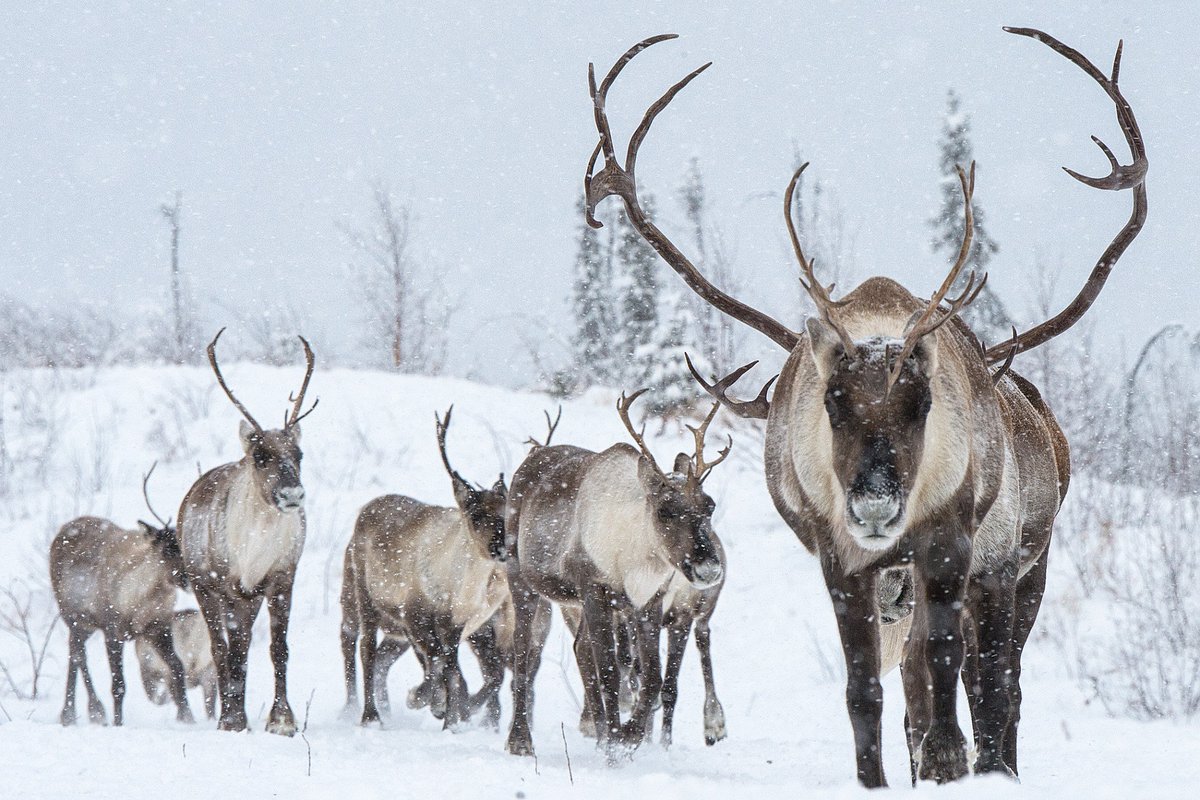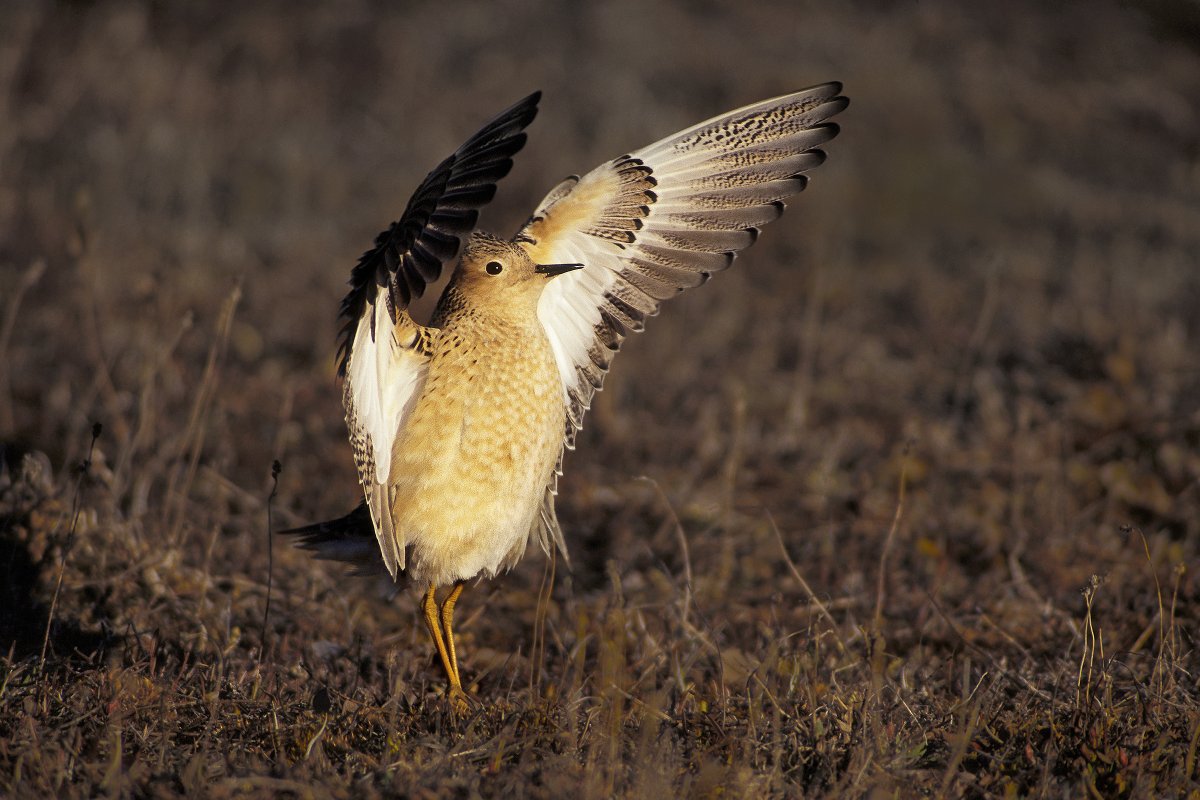With yesterday’s announcement that the Trump administration plans to hold fossil fuel lease sales in the Arctic Refuge sometime this year, let’s consider what’s at stake in this fight.
A (long) THREAD—with a MAP as our guide. [1/n]
A (long) THREAD—with a MAP as our guide. [1/n]
https://twitter.com/cnnbrk/status/1295366672287764483
At first glance, this might look like any other map—with a dotted line to mark the border between Canada and the U.S. Yet look closely at the two curvy lines, for they tell the map’s true story.
Map produced by the Gwich’in Steering Committee, @OurArcticRefuge. [2/n]
Map produced by the Gwich’in Steering Committee, @OurArcticRefuge. [2/n]

One line traces the transnational range of the Porcupine caribou herd, the other the homeland of the Gwich’in. What is most striking is how the two lines repeatedly intersect—showing the interconnections between migrating caribou and Indigenous communities. @ACaribouPeople [3/n]
The Porcupine caribou migrate every year to the coastal plain (the red shaded area near the top). It is their calving grounds, the place they go to have their young. For this reason, Gwich’in consider the area The Sacred Place Where Life Begins. [4/n]
Photo: Subhankar Banerjee
Photo: Subhankar Banerjee

The Porcupine caribou herd currently numbers over 200,000. This is an amazing fact—and an amazing accomplishment! It would not have happened without the long-term struggle of Indigenous peoples, environmentalists, and others to protect the Arctic Refuge. [5/n]
Photo: Peter Mather
Photo: Peter Mather

Why have oil companies and politicians repeatedly sought to drill in the Arctic coastal plain? On the map, look to the west of the Arctic Refuge, where you’ll see the Prudhoe Bay oilfields and the Trans-Alaska Pipeline. [6/n] 

As the historian @PhilWight explains, declining production in Prudhoe has led the Alaskan delegation and others to push “to keep feeding the 40-year-old pipeline with oil." This also keeps the state firmly tied to fossil fuels as the only econ. path. [7/n]
e360.yale.edu/features/trans…
e360.yale.edu/features/trans…
But another future for Alaska is possible—and Gwich’in, Iñupiat, and other Indigenous peoples are leading the fight. Check out this short film from @NativeMovmement about climate change & building diverse alliances. It is powerful & visionary. [8/n]
Beyond the area covered by the map, other species journey to the Refuge from farther away—incl. birds from all 50 U.S. states. This buff-breasted sandpiper migrates from Argentina. Some—like the Yellow Wagtail—even fly all the way from India! [9/n]
Photo: Subhankar Banerjee
Photo: Subhankar Banerjee

For decades, Alaskans and others across the continent have been involved in the struggle against Arctic drilling. There have been close calls before—including in 1991, 1995, 2003, and 2005—but not until 2017 did both Congress and the President approve a development plan. [10/n]
Ever since, the Trump administration has rushed the review process, often by suppressing science and marginalizing Indigenous voices. The journalist @adamfederman has documented examples of this repeated pattern—incl. in his recent @politico piece. [11/n]
politico.com/news/magazine/…
politico.com/news/magazine/…
“What side of history do you want to be on?” Gwich’in Tonya Garnett asked in 2018. In a time of escalating climate change and threats to Indigenous lands and cultures, this drilling plan would mark another example of ongoing colonial violence. [12/n]
truthout.org/articles/arcti…
truthout.org/articles/arcti…
The fight is not over. Groups like @OurArcticRefuge, @ACaribouPeople, @DefendAK, @NorthernCenter,@TrusteesForAK, @CPAWSYukon, @alaskawild, @SierraClub, and others have been in this fight for a long time—and will continue to oppose any effort to drill in the Refuge. [13/n]
Back to the map, for one last look. To the east of the Arctic Refuge, you will see Ivvavik and Vuntut National Parks—areas protected out of Inuvialuit and Vuntut Gwitchin land claims. Ivvavik means, in Inuvialuktun, a place for giving birth, a nursery. [14/n] 

That’s what this fight is all about: a fight to protect a nursery, a fight against cultural genocide, a fight for a just, sustainable future. It’s a fight that links the Arctic Refuge to lives & ecosystems on both sides of the border--& also to places far, far from Alaska. [end]
Spelling error (my apologies!) in handle for Tweet #8: @Native_Mvmt.
More: In this @Native_Mvmt video, Iñupiat Siqiñiq Maupin discusses both the Refuge & another area on the map--west of Prudhoe Bay, where the Trump administration is trying to push through the Willow drilling project, near the Iñupiat community of Nuiqsut.
facebook.com/watch/?v=29938…
facebook.com/watch/?v=29938…
"Like the Porcupine Caribou Herd, the Gwich'in Nation spans borders. We are deeply connected and our fates are intertwined." --Jeffrey Peter, from today's @OurArcticRefuge announcement about the lawsuit to stop @BLMNational from selling off the Refuge.
https://twitter.com/ACaribouPeople/status/1297964282538164224
Another event that fits with this never-ending thread! Thanks @katzyna for sharing these photos from a #ProtectTheArctic #StandWithTheGwichin rally in Whitehorse. Like the @OurArcticRefuge map, participants emphasized the transnational imp. of the Refuge.
https://twitter.com/katzyna/status/1299474674183700481
• • •
Missing some Tweet in this thread? You can try to
force a refresh








